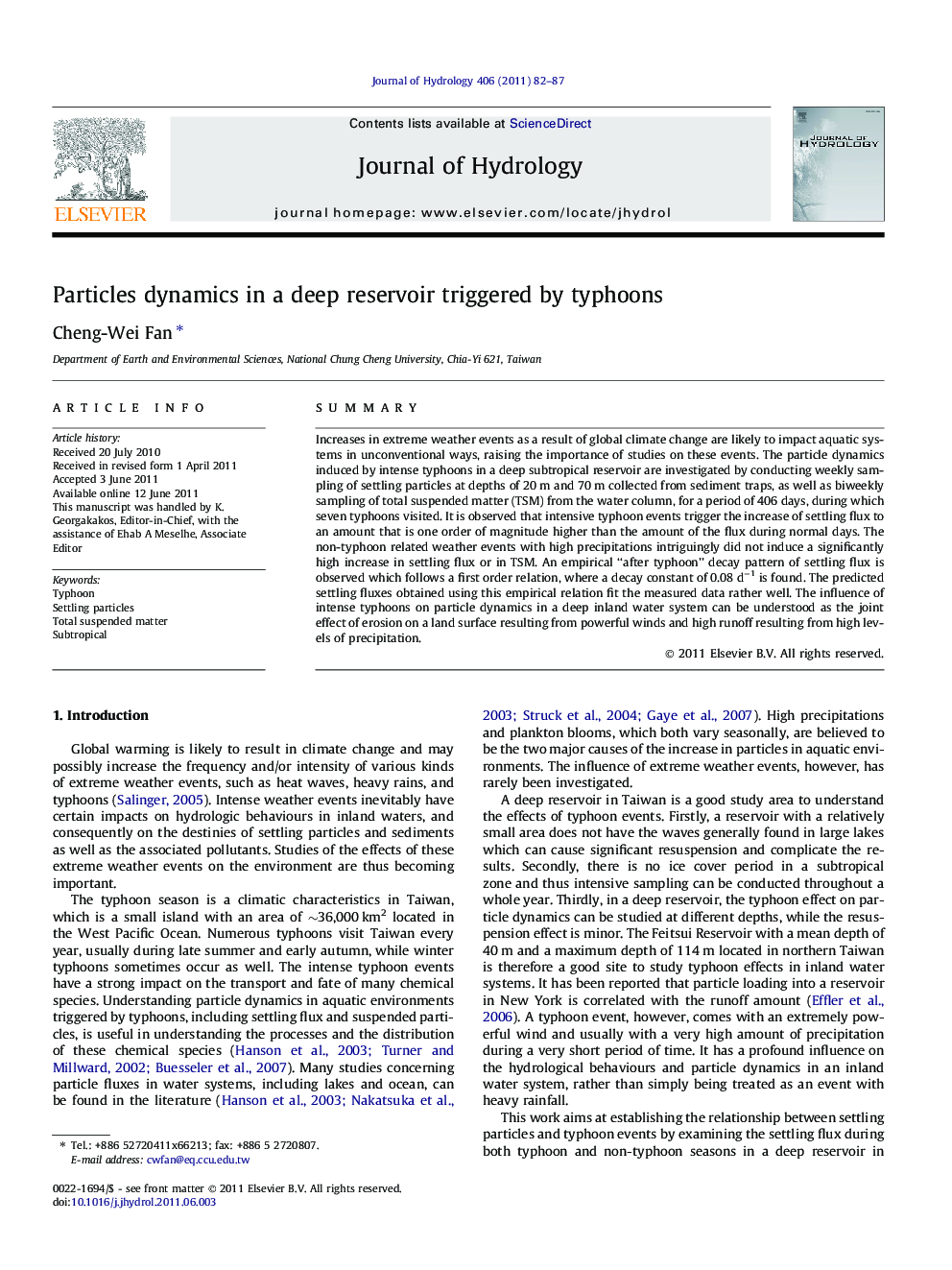| کد مقاله | کد نشریه | سال انتشار | مقاله انگلیسی | نسخه تمام متن |
|---|---|---|---|---|
| 4577686 | 1630016 | 2011 | 6 صفحه PDF | دانلود رایگان |

SummaryIncreases in extreme weather events as a result of global climate change are likely to impact aquatic systems in unconventional ways, raising the importance of studies on these events. The particle dynamics induced by intense typhoons in a deep subtropical reservoir are investigated by conducting weekly sampling of settling particles at depths of 20 m and 70 m collected from sediment traps, as well as biweekly sampling of total suspended matter (TSM) from the water column, for a period of 406 days, during which seven typhoons visited. It is observed that intensive typhoon events trigger the increase of settling flux to an amount that is one order of magnitude higher than the amount of the flux during normal days. The non-typhoon related weather events with high precipitations intriguingly did not induce a significantly high increase in settling flux or in TSM. An empirical “after typhoon” decay pattern of settling flux is observed which follows a first order relation, where a decay constant of 0.08 d−1 is found. The predicted settling fluxes obtained using this empirical relation fit the measured data rather well. The influence of intense typhoons on particle dynamics in a deep inland water system can be understood as the joint effect of erosion on a land surface resulting from powerful winds and high runoff resulting from high levels of precipitation.
► An after typhoon decay pattern of settling flux is found in a deep reservoir.
► The decay patter follows a first order relation.
► An empirical decay constant of 0.08 d−1 is found.
Journal: Journal of Hydrology - Volume 406, Issues 1–2, 18 August 2011, Pages 82–87